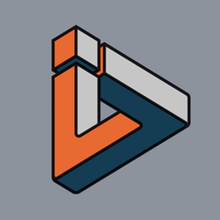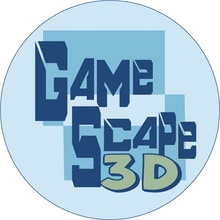The process of 3D printing comprises of a few essentials. Of course, having a great 3D printer and a well designed 3D model is important but it is equally important to have a powerful 3D printing slicer. In case you are new to the field of 3D printing, a 3D printing slicer is a software that provides an interface between the 3D model and the 3D printer.
The slicer prepares your 3D model for printing, by generating a G-code which is a type of programming language understood by the 3D printer. Meanwhile, there are a number of 3D Printing slicer software available in the market, we have selected the top ten, their features, platforms, and prices for you to select the best one for our requirements:
1. Simplify3D – S3D Simplify3D is the best available 3D slicer for professionals. The slicer is compatible with almost all 3D-Printers of the industry. Its key features include high processing speed, a user-friendly interface, and powerful features to edit the complex 3D models. Also, the slicer allows you to edit raw G-codes with relative ease. While experimenting with different nozzles you can edit settings like extruders, layers and select from the various infill methods, temperature control and cooling time settings to get the optimal results.
Simplify3D is the best available 3D slicer for professionals. The slicer is compatible with almost all 3D-Printers of the industry. Its key features include high processing speed, a user-friendly interface, and powerful features to edit the complex 3D models. Also, the slicer allows you to edit raw G-codes with relative ease. While experimenting with different nozzles you can edit settings like extruders, layers and select from the various infill methods, temperature control and cooling time settings to get the optimal results.
Pros:
– Gives you high-quality 3D printing results
– Provides multiple options to customize your model/printer settings
– Its powerful features allow you to edit and process complex models
– Has a very high processing speed
Cons:
– It’s an expensive option for beginners
2. Cura
 While S3D is considered to be the best “paid” slicer in the market, Ultimaker’s Cura takes the number 1 spot for the Open Source slicers. Since it’s free to use, Cura has become one of the most widely used 3D slicer software in the world. Also, Cura 3D slicer can process STL, 3MF and OBJ formats which gives it the versatility to work with almost all 3D-Printers in the market.
While S3D is considered to be the best “paid” slicer in the market, Ultimaker’s Cura takes the number 1 spot for the Open Source slicers. Since it’s free to use, Cura has become one of the most widely used 3D slicer software in the world. Also, Cura 3D slicer can process STL, 3MF and OBJ formats which gives it the versatility to work with almost all 3D-Printers in the market.
Pros:
– Contains a simple interface with a highly customizable dashboard
– It’s easy to use for experts and beginners alike
– Open Source and Free
– The slicer provides options to edit, tinker and visualize complex designs
Cons:
– Time estimation can show an error of 10-20 minutes
3. Slic3r 3D printing slicer software

Another great Open Source 3D slicer on the list is Slic3r. Thanks to the actively contributing community of slic3r developers, professionals today are able to use many 3D printing features. For instance, the use of brim, micro layering, multiple extruders, bridge detection, command line slicing, sequential printing, etc. are all examples of the features that were developed by the Slic3r community. One of its best features is the ability to view the infill patterns of honeycomb structure separately across the layers. This gives the designers the freedom to create unique designs, independent of the other layers of the design.
Pros:
– Open Source and powerful software with features to edit designs in real-time
– Can be directly linked to the user’s OctoPrint box.
– Provides the option of real-time incremental slicing
Cons:
– It’s not suitable for beginners
4. KISSlicer
 “Keep It Simple Slicer” or KISSlicer is one of the most user-friendly 3d slicers available in the market. You can select the package from the available options of free, Commercial ($35) and Educational ($25) versions. The free version is suitable for amateurs who want to get hands-on experience with 3D printing. Further, the pro-version provides features like multi-head printing and G-code generation.
“Keep It Simple Slicer” or KISSlicer is one of the most user-friendly 3d slicers available in the market. You can select the package from the available options of free, Commercial ($35) and Educational ($25) versions. The free version is suitable for amateurs who want to get hands-on experience with 3D printing. Further, the pro-version provides features like multi-head printing and G-code generation.
Pros :
– The software provides smart multi-head temp control
– It allows adjustable printer speeds
– The slicer can handle complex meshes
*Commercial version
Cons:
– Its paid features are offered free by other slicers
– You have to manually generate the G-code for unsupported printers
5. OctoPrint 3D printing slicer software
 OctoPrint slicer is considered to be the best option in the market for remotely controlling a 3D printing operation. The cloud-based software gives its users the freedom to control printing via browsers. The application is installed on Raspberry Pi, which can be extended further by using easily available plug-ins. Further, using its cloud-based operation enables you to directly load STL files onto the 3D-Printer without having to use an SD card interface.
OctoPrint slicer is considered to be the best option in the market for remotely controlling a 3D printing operation. The cloud-based software gives its users the freedom to control printing via browsers. The application is installed on Raspberry Pi, which can be extended further by using easily available plug-ins. Further, using its cloud-based operation enables you to directly load STL files onto the 3D-Printer without having to use an SD card interface.
Pros:
– It’s Open Source and Free
– Contains an Integrated slicer software that is based on the powerful CuraEngine
– The software gives great mobility to the users who can read the G-codes directly from the printer
Cons:
– It only supports STL files (currently)
– Not good for beginners
6. 3DPrinterOS
 Next up is the 3DPrinterOS. Another cloud-based slicer that gives great mobility to its users. Using the slicer you can directly access your 3D-Printer from a browser. 3DPrinterOS is an integration of three 3D-Printer slicer apps namely, Cloud Slicer, Slicer 2 and MakerBot Slicer. Like all other slicers, you can choose the one that fits your needs.
Next up is the 3DPrinterOS. Another cloud-based slicer that gives great mobility to its users. Using the slicer you can directly access your 3D-Printer from a browser. 3DPrinterOS is an integration of three 3D-Printer slicer apps namely, Cloud Slicer, Slicer 2 and MakerBot Slicer. Like all other slicers, you can choose the one that fits your needs.
Pros:
– Cloud-based
– Easy to use
– Allows you to convert your slicer settings as JSON code
Cons:
– A lot of features are available on the paid version
7. Astroprint
 While using Astroprint you will realize that it seems like a hybrid between 3DPrinterOS and OctoPrint. Well, it was built on the OctoPrint platform so the similarity is natural. The Astrobox interface provides you the freedom to remotely control the printer from any browser. Also, the software offers integration of many other 3D printing applications like Yeggi and Thingiverse for searching and downloading pre-designed models.
While using Astroprint you will realize that it seems like a hybrid between 3DPrinterOS and OctoPrint. Well, it was built on the OctoPrint platform so the similarity is natural. The Astrobox interface provides you the freedom to remotely control the printer from any browser. Also, the software offers integration of many other 3D printing applications like Yeggi and Thingiverse for searching and downloading pre-designed models.
Pros:
– User-friendly interface
– Cloud-based
– Integrates many useful 3D printing applications
Cons:
– Limited features
– Lesser flexibility as compared to its peers
– Freemium
8. Repetier 3D printing slicer
 Repetier is perhaps the most favored 3D printing slicer option among the RepRap 3D-Printer community. Also, it’s compatible with most of the commercial FDM 3D printers. But its true strength lies in Its ability to support up-to 16 extruders. Furthermore, it can be integrated with multi-slicer support services like CuraEngine and Slic3r. Also, the Repetier Host offers remote access through the dedicated server. Furthermore, it can also be installed on Raspberry Pi.
Repetier is perhaps the most favored 3D printing slicer option among the RepRap 3D-Printer community. Also, it’s compatible with most of the commercial FDM 3D printers. But its true strength lies in Its ability to support up-to 16 extruders. Furthermore, it can be integrated with multi-slicer support services like CuraEngine and Slic3r. Also, the Repetier Host offers remote access through the dedicated server. Furthermore, it can also be installed on Raspberry Pi.
Pros:
– Best choice for RepRap community
– Cloud-based
– Free
Cons:
– Print quality is not that great
9. CraftWare 3D Slicer
 A lot of users say using CraftWare reminds them of the Simplify3D interface. Developed by CraftBot, the slicer is compatible with all available FDM 3D Printers. Also, its G-code visualizer is very powerful and allows you to view the layer-by-layer model. Further, it gives a 360-degree view of the model to you for detailed tinkering.
A lot of users say using CraftWare reminds them of the Simplify3D interface. Developed by CraftBot, the slicer is compatible with all available FDM 3D Printers. Also, its G-code visualizer is very powerful and allows you to view the layer-by-layer model. Further, it gives a 360-degree view of the model to you for detailed tinkering.
Pros:
– User-friendly interface
– A free alternative to the great S3D (in terms of interface)
– Good for beginners
Cons:
– Quality is not as great as that of Cura or S3D
10. IceSL Slicer
 And last but not least, IceSL. IceSL is a multifunctional software that offers 3D slicing and modeling features under one roof. The powerful software allows you to work with more control over your projects. Also, the layer-by-layer viewing capability of the G-code is an important feature that the slicer software provides.
And last but not least, IceSL. IceSL is a multifunctional software that offers 3D slicing and modeling features under one roof. The powerful software allows you to work with more control over your projects. Also, the layer-by-layer viewing capability of the G-code is an important feature that the slicer software provides.
Pros:
– The software gives great control to designers
– It’s free
– Multiple 3D printing features under one roof
Cons:
– Not available for MAC
– Not suitable for beginners
Now that you have the slicer for your 3d printer you will now need to find websites to download stl files this article will guide you through the best websites to download 3D models.
The post Top Ten 3D Printing Slicer Software in 2019 appeared first on Inov3D.


